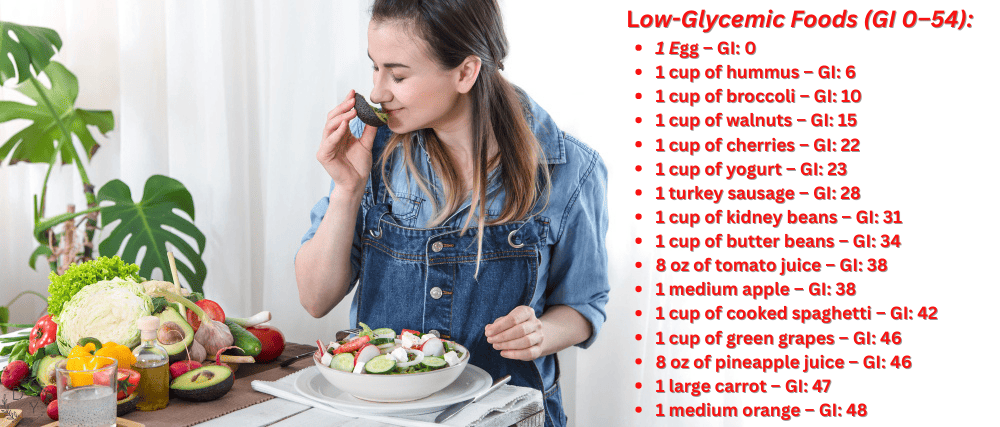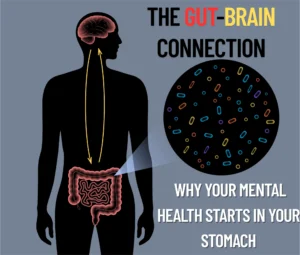What Are Low-Glycemic Foods?
Low-glycemic foods are foods that score low on the Glycemic Index (GI) — a scientific scale ranging from 0 to 100 used to measure how quickly carbohydrates in food raise blood glucose (sugar) levels after eating. With a simple cange in dite and eating right food at right time can do wonders.
When you consume carbohydrates, your body breaks them down into glucose, which enters your bloodstream. The Glycemic Index ranks foods based on how fast and how high they cause blood sugar levels to rise:
- Low GI: 55 or less (slow, steady rise in blood sugar)
- Medium GI: 56–69 (moderate rise)
- High GI: 70 or more (quick spike in blood sugar)
🧠 Why Does the Glycemic Index Matter?
Eating foods that cause rapid spikes in blood sugar (high-GI foods) can:
- Lead to energy crashes
- Trigger hunger and cravings
- Increase the risk of insulin resistance
- Contribute to obesity, type 2 diabetes, and heart disease
In contrast, low-GI foods release glucose more gradually, offering several health benefits.
✅ Benefits of Low-Glycemic Foods
- Better blood sugar control
Ideal for people with diabetes or prediabetes, as it helps maintain stable glucose levels. - Sustained energy
Prevents energy crashes by releasing glucose slowly into the bloodstream. - Appetite control
Keeps you full longer, helping to manage weight and reduce overeating. - Lower risk of chronic disease
Associated with reduced risk of type 2 diabetes, heart disease,cancer and metabolic syndrome.
🥗 Examples of Low-Glycemic Foods (GI ≤ 55)
| Food | Approximate GI Score |
|---|---|
| Lentils | 32 |
| Chickpeas | 28 |
| Apple | 38 |
| Cherries | 22 |
| Oatmeal (steel-cut) | 51 |
| Plain yogurt | 23 |
| Broccoli | 10 |
| Carrots (raw) | 47 |
| Hummus | 6 |
| Egg (no carbs, GI = 0) | 0 |
Note: Many protein-rich and non-starchy foods (like eggs, meats, and most vegetables) don’t significantly affect blood sugar and therefore have very low or no GI values.
Including more low-glycemic foods in your diet is a simple yet powerful way to support long-term health. Whether you’re managing diabetes, trying to lose weight,avoiding many cronic disease(cancer) or simply looking to eat more mindfully, focusing on low-GI foods can help you feel better, stay full longer, and keep your energy levels stable throughout the day.
These foods have a low glycemic index and help keep your blood sugar stable. Incorporate them into your daily diet to support weight loss and balanced glucose levels:
- 1 egg – GI: 0
- 1 cup of hummus – GI: 6
- 1 cup of broccoli – GI: 10
- 1 medium yellow onion – GI: 10
- 1 cup of walnuts – GI: 15
- 1 cup of cherries – GI: 22
- 1 cup of cashews – GI: 22
- 1 cup of yogurt – GI: 23
- 1 turkey sausage – GI: 28
- 1 cup of kidney beans – GI: 31
- 1 cup of butter beans – GI: 34
- 8 oz of tomato juice – GI: 38
- 1 medium apple – GI: 38
- 1 cup of cooked spaghetti – GI: 42
- 1 cup of green grapes – GI: 46
- 8 oz of pineapple juice – GI: 46
- 1 large carrot – GI: 47
- 1 medium orange – GI: 48
- 1 large grapefruit – GI: 50
- 1 large banana – GI: 52
- 1 cup of peas – GI: 54












